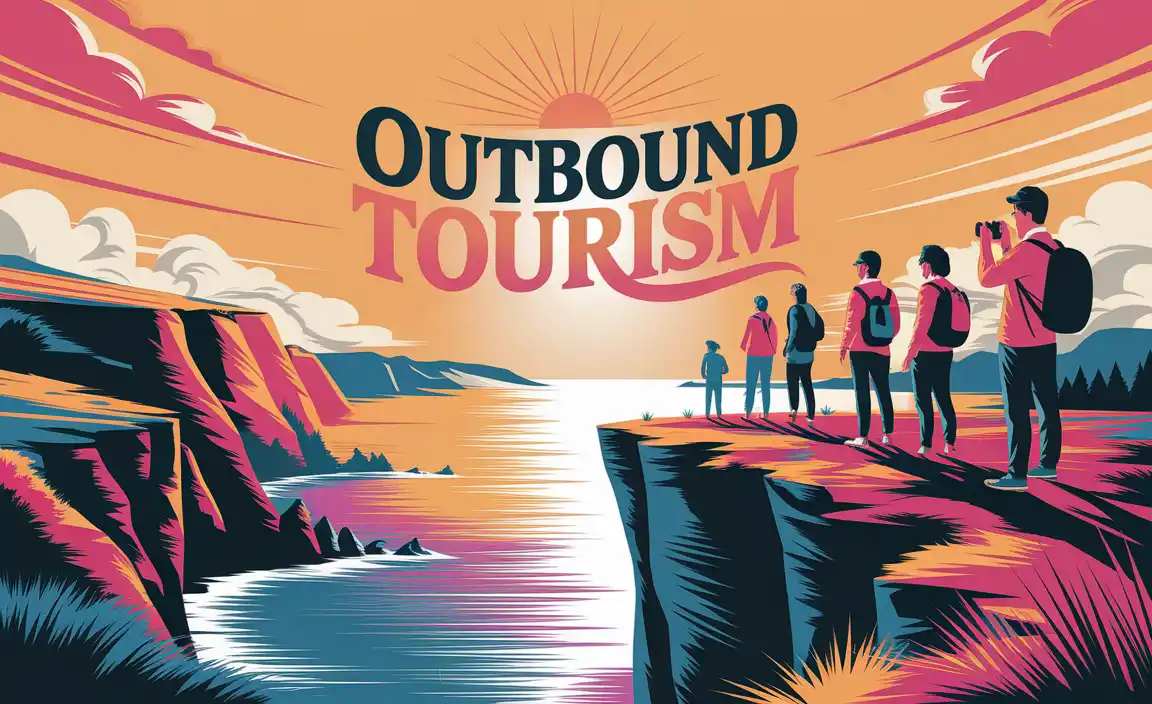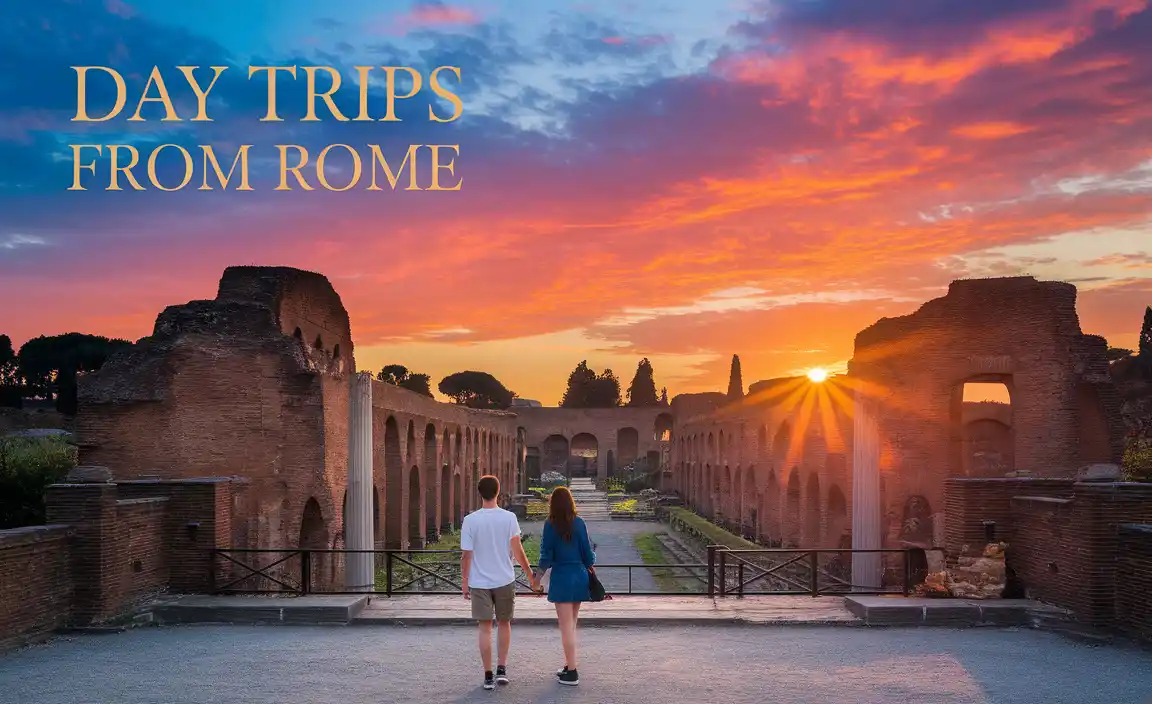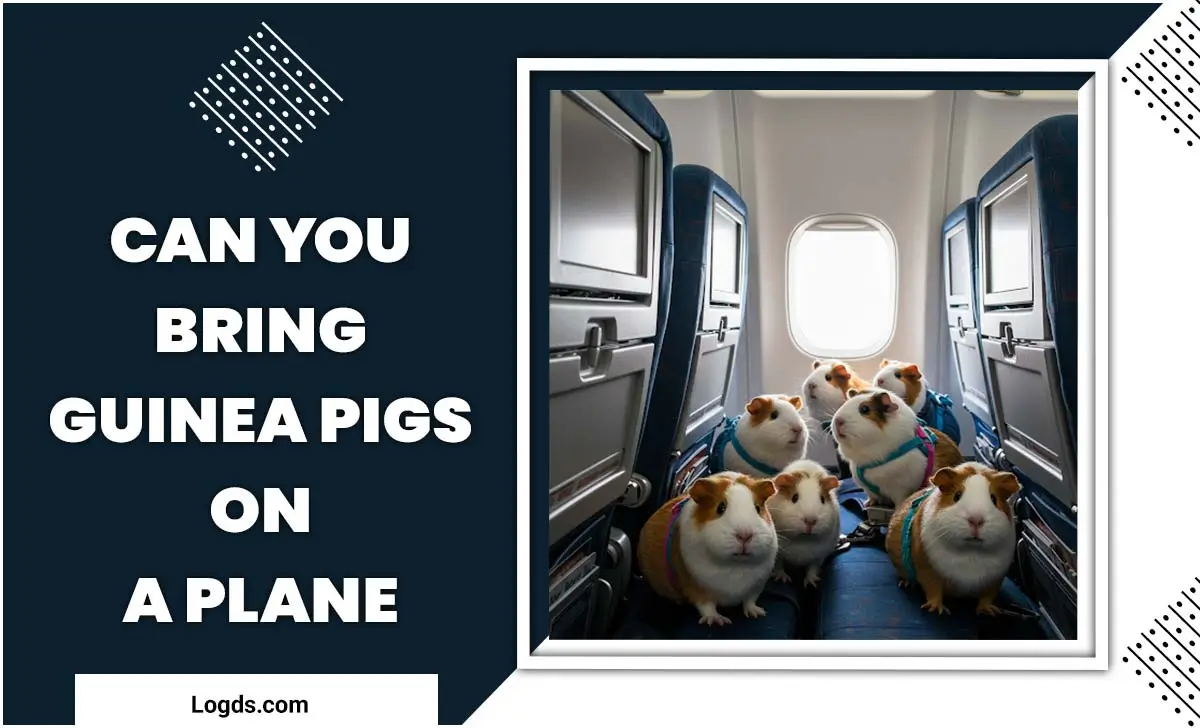Ready to explore Bolivia with ease? This guide provides essential tips and practical advice for accessible travel, ensuring a comfortable and memorable journey for everyone. Discover how to navigate attractions, accommodations, and transportation, making your Bolivian adventure stress-free and enjoyable.
Traveling to Bolivia can be an amazing experience, but sometimes you just want to know the easy way to do things. Planning a trip to a new country can feel overwhelming, especially when you need to consider accessibility. Will you be able to get around?
Where will you stay? What about getting to those incredible sights you’ve dreamed of? It’s completely normal to have these questions! The good news is, with a little preparation, Bolivia can be a wonderfully welcoming destination for all travelers. This guide is here to break down the essentials, offering simple, actionable steps to make your Bolivian adventure smooth and stress-free. Let’s dive into how you can experience the magic of Bolivia without the usual travel worries.
Your Accessible Adventure in Bolivia Starts Here
Bolivia, a landlocked gem in the heart of South America, offers a breathtaking tapestry of landscapes, from the surreal salt flats of Uyuni to the bustling colonial streets of Sucre and the dizzying heights of La Paz. While it’s known for its rugged beauty and rich culture, it’s also a destination that’s increasingly working towards better accessibility.
As Michael C. Herrera from Journey Essentials, I’m all about making travel practical, comfortable, and exciting for everyone. That’s why I’ve put together this guide to help you navigate Bolivia with confidence, focusing on real-life solutions and effortless planning, whether you’re traveling solo, with family, or need specific travel comfort solutions like adult or child diapers for longer journeys.
Understanding Bolivia’s Accessible Travel Landscape
Bolivia is a country of incredible extremes, and this extends to its infrastructure. While major cities and tourist hubs are making strides, you’ll find varying levels of accessibility across different regions and types of establishments.
The key is to be informed and prepared. Most tourist-focused businesses and newer hotels are more aware of accessibility needs. For older buildings or more remote areas, flexibility and a good attitude are your best friends. Remember, many Bolivians are incredibly hospitable and willing to help if you encounter a barrier.
Key Considerations for Accessible Travel in Bolivia:
- Pace Yourself: Acclimatize to the high altitudes, especially in La Paz and Potosí.
- Transportation Options: Research accessible transport in advance.
- Accommodation Choices: Look for hotels that explicitly mention accessible rooms or features.
- Attraction Accessibility: Some natural wonders might have limited paved paths.
- Communication: Learning a few Spanish phrases can go a long way.
Navigating Bolivia: Transportation Tips
Getting around Bolivia can be an adventure in itself. When prioritizing accessibility and ease, consider these options. For longer distances, flights are the quickest but can be more expensive. Buses are common but can be less comfortable and have accessibility challenges.
In cities, taxis and ride-sharing apps are abundant, but you’ll need to be clear about your needs. For those requiring specific comfort solutions, like adult diapers for extended journeys, ensure you pack an adequate supply and consider discreet transport methods where possible.
Intercity Travel
Flights: The most accessible and efficient way to travel between major cities like La Paz, Santa Cruz, and Sucre. Airlines like Boliviana de Aviación (BoA) and Amaszonas operate these routes. It’s advisable to book flights in advance and contact the airline directly to discuss any specific needs you might have, such as assistance boarding or seating arrangements.
Buses: While the most budget-friendly option for intercity travel, buses can be challenging for those with mobility issues. Services like Todo Turismo or Oruro Express offer more comfortable “super pullman” seats, but boarding and disembarking can still be difficult, and restrooms onboard may not be easily accessible. Consider this option only if your mobility allows for navigating steps and potentially uneven ground at terminals.
Intracity Travel
Taxis: Readily available in most cities. It’s best to hail them from busy streets or ask your hotel to call one. Clearly communicate your destination. Some taxis might have larger doors or more space in the trunk for mobility aids if needed. Always agree on a fare before starting your journey.
Ride-Sharing Apps: Apps like Uber and Taxis Piratas are available in La Paz and Santa Cruz. They offer a convenient way to book a ride and see the fare upfront. While you can’t specifically request an accessible vehicle through the app, you can communicate with the driver upon arrival to ensure they can accommodate your needs.
Public Transport (Minibuses/Micros): These are the most common form of local transport but are generally not accessible due to their small size, frequent stops, and steps. It’s best to avoid them if accessibility is a primary concern.
Finding Accessible Accommodation
Securing a comfortable place to stay is crucial for any traveler. In Bolivia, your best bet for accessible accommodation will usually be in the more tourist-oriented cities like La Paz, Sucre, and Santa Cruz. Look for modern hotels or those that have been recently renovated, as they are more likely to have considered accessibility features.
What to Look For:
- Room Features: Accessible bathrooms with grab bars, roll-in showers, and sufficient maneuvering space are key. Ensure the bed height is also comfortable for you.
- Hotel Amenities: Is there an elevator to reach upper floors? Are common areas like the lobby and breakfast area easily navigable?
- Staff Assistance: Friendly and helpful staff can make a huge difference if you need help with luggage or navigating the premises.
Tip: Always contact the hotel directly before booking, even if their website mentions accessible options. Describe your specific needs and ask for photos or confirmation of features. Websites like Booking.com or Expedia allow you to filter for “accessible rooms,” but it’s still wise to verify. For those who require specialized personal care items, like discreet adult diapers for overnight comfort or long travel days, confirming bathroom privacy and space is also important.
Must-See Accessible Attractions in Bolivia
Bolivia’s wonders are diverse, and many can be enjoyed with a bit of planning. While some natural landscapes present challenges, many cultural and urban attractions are becoming more welcoming.
La Paz: The Urban Marvel
La Paz, the highest administrative capital in the world, is a city of stunning vistas and vibrant culture. The city’s Teleférico (cable car system) is a marvel of urban transport and offers incredible, accessible views of the sprawling city below. It’s a fantastic way to get around and experience the city without navigating its steep, often crowded streets. Most stations are modern and accessible.
- Teleférico: A must-do! Multiple lines cover different parts of the city.
- Calle Jaén: A well-preserved colonial street with several small museums. While the street itself is cobblestoned, many museums have ground-floor access or ramps.
- Mirador Killi Killi: Offers panoramic views. Access to the viewpoint itself is usually paved, though reaching it might involve a taxi ride up steep inclines.
Uyuni Salt Flats: A Surreal Landscape
The Salar de Uyuni is one of Bolivia’s most iconic sights. Tours are essential for visiting. While the salt flats are vast and flat, the accessibility of specific viewpoints and the vehicles used for tours can vary.
- Tour Operators: When booking a tour, specifically inquire about vehicle accessibility and the planned stops. Some 4×4 vehicles may have higher steps.
- Salt Hotels: Some hotels made of salt blocks can be interesting but might have uneven flooring.
- Incahuasi Island: Famous for giant cacti, access to the top might involve walking on packed salt which can be uneven.
Note: Many parts of the Salar are vast, open salt crust. While flat, access to and from the 4×4 vehicles is the primary consideration. Some areas might be less suitable for those with significant mobility challenges, so communicative tour operators are key. For any extended periods of touring, having comfortable personal hygiene solutions like adult incontinence products can provide extra peace of mind.
Sucre: The White City
Sucre, Bolivia’s constitutional capital, is a UNESCO World Heritage site known for its beautiful colonial architecture and relaxed atmosphere. Many of its central streets are paved, and the main plazas are easily navigable.
- Plaza 25 de Mayo: The main square, flat and accessible.
- Casa de la Libertad: A historic building where Bolivia’s independence was declared. It has ground-level access.
- Central Market (Mercado Central): A vibrant local experience. Pathways can be narrow and crowded, especially on market days.
External Link: For insights into preserving historical sites while improving accessibility, check out guidelines from UNESCO on heritage site management. While not Bolivia-specific, the principles often apply globally: UNESCO Tourism and Accessibility.
Samaipata & El Fuerte
Samaipata is a charming town nestled in the foothills of the Andes, a gateway to pre-Inca ruins.
- El Fuerte de Samaipata: This UNESCO World Heritage site features a massive carved rock. While parts of the site have walking paths, some areas can be steep or uneven. The main interpretive center usually has better accessibility.
Essential Packing for a Comfortable Trip
Packing smart can make your Bolivian journey significantly more comfortable and stress-free. Beyond the usual travel items, consider these essentials, especially if you require specific comfort solutions.
Comfort & Personal Care Essentials:
- High-Altitude Medication: Consult your doctor about Diamox or other altitude sickness remedies.
- Sun Protection: High altitude means intense sun. Pack strong sunscreen, a wide-brimmed hat, and sunglasses.
- Comfortable Footwear: Sturdy, supportive shoes are a must for exploring varied terrains.
- Layers of Clothing: Temperatures can vary greatly. Pack light, breathable layers, a fleece, and a waterproof outer shell, especially for the Andes and Uyuni.
- Personal Hygiene Supplies: This is where Journey Essentials shines! If you or a loved one use adult diapers or child diapers for extended travel, long bus rides, or simply for peace of mind, ensure you pack more than you think you’ll need. Brands offering discreet, absorbent, and comfortable options are invaluable. Consider trusted brands like Depend or Tena for adults, and Pampers or Huggies for children. Planning for long days of sightseeing or travel, especially in areas where stores might not stock your specific needs, makes this a critical packing item. Pack them in a waterproof bag to protect against spills or rain.
- Hand Sanitizer & Wet Wipes: Essential for hygiene when facilities are basic.
- Basic First-Aid Kit: Band-aids, antiseptic wipes, pain relievers, and any personal prescriptions.
Travel Gear:
- Lightweight Backpack: For day trips.
- Portable Charger: Keep your devices powered up.
- Reusable Water Bottle: Stay hydrated and reduce plastic waste.
- Power Adapter: Bolivia uses Type A and Type C plugs.
Food and Drink: Staying Safe and Healthy
Bolivian cuisine is hearty and delicious! To stay healthy on your trip, follow these simple guidelines:
- Drink Bottled Water: Always opt for sealed bottled water. Avoid tap water, even for brushing your teeth, especially in less developed areas.
- Be Cautious with Street Food: While tempting, it’s often best to stick to reputable restaurants or eateries that look clean and busy, especially during your first few days.
- Peel Fruits and Vegetables: Or ensure they are thoroughly cooked.
- Embrace Local Delicacies: Try salteñas (savory pastries), llama steak (if you’re adventurous!), and quinoa dishes, but always from trusted sources.
- Acclimatize Smart: When consuming alcohol, do so in moderation, especially at high altitudes, as its effects are amplified.
Communicating in Bolivia
Spanish is the official language. While you’ll find English spoken in tourist hubs and by some guides, knowing basic Spanish phrases is incredibly helpful and appreciated by locals.
Useful Phrases:
- Hola (Hello)
- Gracias (Thank you)
- Por favor (Please)
- ¿Cuánto cuesta? (How much does it cost?)
- ¿Dónde está el baño? (Where is the bathroom?)
- Necesito ayuda (I need help)
- Soy.$(Your Name). (I am $(Your Name).)
- Tengo una discapacidad (I have a disability)
- ¿Hay un acceso para sillas de ruedas? (Is there wheelchair access?)
Having a translation app on your phone can also be a lifesaver.
Budgeting for Your Accessible Trip
Bolivia is one of South America’s most affordable countries. However, accessible travel can sometimes incur extra costs, such as private transfers or specific hotel accommodations. Planning your budget carefully will ensure a smooth trip.
Estimated Costs (per person, per day, excluding flights):
| Category | Budget Traveler (USD) | Mid-Range Traveler (USD) | Comfort Traveler (USD) |
|---|---|---|---|
| Accommodation | 20 – 40 | 40 – 80 | 80+ (ensuring accessibility features) |
| Food | 10 – 20 | 20 – 40 | 30 – 50 |
| Local Transport | 5 – 10 | 10 – 20 | 20 – 40 (more private/accessible options) |
| Activities/Tours | 15 – 30 | 30 – 60 | 40 – 80 (prioritizing accessible tours) |
| Miscellaneous | 5 – 10 | 10 – 20 | 15 – 30 |
| Total Estimate | 55 – 110 | 110 – 220 | 185 – 300+ |
Note: These are rough estimates. Prices can vary significantly based on location, season, and personal spending habits. Special accommodations for accessibility might push you closer to the mid-range or comfort categories.
Safety and Well-being
Bolivia is generally safe for tourists, but like any destination, it’s wise to take precautions.
- Altitude Sickness: Take it seriously. Hydrate, avoid alcohol and heavy meals on your first days, and ascend gradually if possible. Consult your doctor beforehand.
- Petty Theft: Be aware of your surroundings, especially in crowded markets and public transport. Keep valuables secure and out of sight.
- Emergency Numbers: In La Paz, 110 for Police, 114 for Ambulance. In other cities, numbers may vary, but tourist police are often available.
- Travel Insurance: Crucial for any trip. Ensure it covers medical emergencies, trip cancellations, and lost luggage.
Reliable Health Information: For up-to-date health advice for travelers, including vaccinations and disease prevention relevant to Bolivia, the Centers for Disease Control and Prevention (CDC) is an excellent resource: CDC Bolivia Travel Health.
Frequently Asked Questions
Q1: Is Bolivia generally accessible for travelers with disabilities?
Bolivia is improving its accessibility, particularly in tourist areas and major cities. However, infrastructure can be inconsistent outside of these zones. Modern hotels and attractions are more likely to be accessible, while older sites or natural landscapes may present challenges. Planning and direct communication with providers are key.
Q2: What are the best cities in Bolivia for accessible travel?
La Paz (especially for its Teleférico system), Sucre (for its colonial charm and flatter center), and Santa Cruz (for more modern infrastructure) are generally considered more accessible than other parts of the country.
Q3: How should I handle altitude sickness in Bolivia?
Acclimatize slowly, drink plenty of bottled water, avoid alcohol and heavy meals initially, and consider consulting your doctor about altitude medication. Rest is crucial on your first days in high-altitude cities like La Paz.




